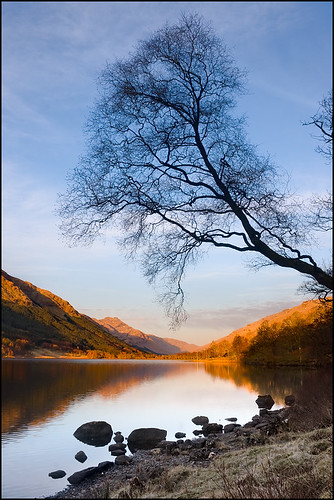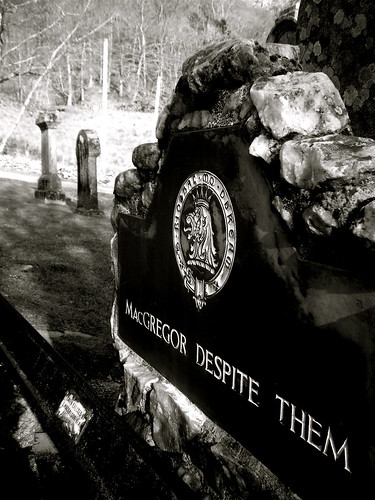Vice President for Planning & Assessment and Professor of Psychology Susan Campbell Baldridge is in the Five Questions Hot Seat this week.
1. You’re a professor of psychology and Vice President for Planning & Assessment. It’s four weeks into the semester, and summer is quickly becoming a distant memory. We have to ask: What’s your present state of mind?
Well, I had a pretty fabulous summer – I got married and my husband and I honeymooned in Scotland – so just about any semester would be a come down from that. To make matters worse, you’re asking that question a few days before the reaccreditation review team visits our school abroad in Spain, and a few weeks before the full visit of the review team to campus here in Vermont. So I might be tempted to say, “Don’t ask.” But in reality, despite the stress I’m feeling leading up to all that, I’m also feeling pretty pleased that we’ve come this far and accomplished what we set out to do with respect to reaccreditation: We wanted to produce a self study that was inclusive of as many people as possible – including folks from all the College’s programs – and that reflected who are as an institution, celebrating our strengths and acknowledging our challenges. I think we did that. So I guess my state of mind is a mixed bag of pre-visit anxiety, pride in what we’ve accomplished, and wistful nostalgia for the summer.
2. As VP you have led the College’s reaccreditation process. Please tell us about your love affair with data.
It wasn’t love at first sight. I’ve always been competent with numbers, but they never had much appeal until I learned how to use statistics to help answer psychological questions in college and graduate school. Numbers became meaningful and useful in a way I hadn’t seen before. Teaching statistics is a way to help students see that value as well. But the real crux of that passion is less about numbers than it is about pulling order out of what seems like chaos. A statistical test can help do that by taking a spreadsheet full of numbers and telling us something about how the world works or how people think. But I get the same thrill from extracting meaning from any seemingly disparate sources of information, which might just as easily be qualitative as quantitative. I guess I just like to solve a good puzzle. (The New York Times crossword is another outlet for that!)
3. But you’re not just a numbers gal. Word on the street is you love to quilt, too. Why?
Well, there’s some overlap between my fondness for solving puzzles and quilting; cutting fabric into shapes and then recombining them to produce a pattern that’s pretty or fun to look at involves lots of working with numbers. But the real appeal for me is much more visual and tactile. I like vibrant colors and I like to play with the texture and the feel of fabric. I keep fabric organized by color and stacked where I can see it in my sewing room, with spools of brightly colored thread arranged next to it. The room is painted a vibrant pear green. All that color and texture feels like a nice escape when I’ve spent too much time with my nose in a data file.
4. What is the most beautiful place you have ever visited?
That one’s easy. On our aforementioned honeymoon, my husband and I went to visit the grave of Rob Roy MacGregor in Balquhidder, Scotland. (You may have seen the movie about Rob Roy, starring Liam Neeson, or read the novel about him by Sir Walter Scott.) My grandmother traced the genealogy of our family line back to Rob Roy’s brother, so there is a family interest in stories about Rob Roy. I’m particularly invested because my middle name is McGregor (the family dropped the “a” somewhere along the line), and I’ve always enjoyed the fact that, after spending the better part of his adult life fighting more powerful clans and royal foes who had outlawed the use of the name MacGregor, Rob Roy’s grave is defiantly engraved, “MacGregor Despite Them.” The tiny village of Balquhidder is set in the most beautiful place I’ve ever seen. It sits at the tip of Loch Voil, a long, calm lake in a steep mountain glen. Sheep and Highland cattle meander the lush valley and up the mountainsides, which are misty and atmospheric in the mornings and (at least sometimes) bright and sunny in the afternoons. That description doesn’t do it justice, but suffice it to say that I was awed by the beauty and peacefulness of the place.
5. You grew up in Indiana, and received your PhD from UCLA. What are your thoughts on Midwest vs. East Coast vs. West Coast?
If you’re asking where my loyalty lies, it’s in the Hoosier heartland. The people there – including my family, most of whom still live in Indianapolis – are warm and down to earth and have a sense of humility that I think the world could use more of. And ultimately, it’s still home to me. (Hearing Jim Nabors sing “Back Home Again in Indiana” at the start of the Indy 500 each year still gets me misty-eyed. As does rooting for Butler each year in the NCAA basketball tournament.) Living in Los Angeles while I attended graduate school was a great adventure, and I’m glad I had the chance to experience the hum and glamour of life in a big city. But ultimately, the smog, the crime, and the earthquakes were too much for me. So being able to live and work and raise my kids in a beautiful and close-knit community in Vermont seemed like a huge gift. Still does.

